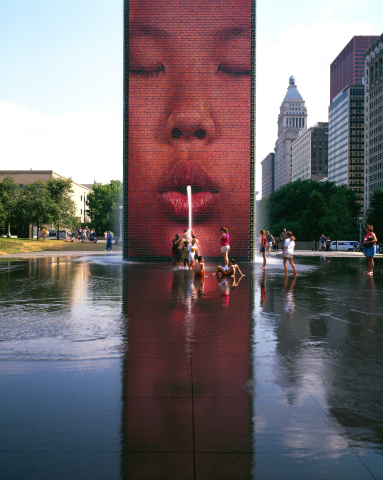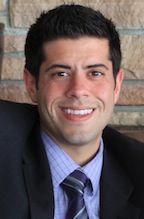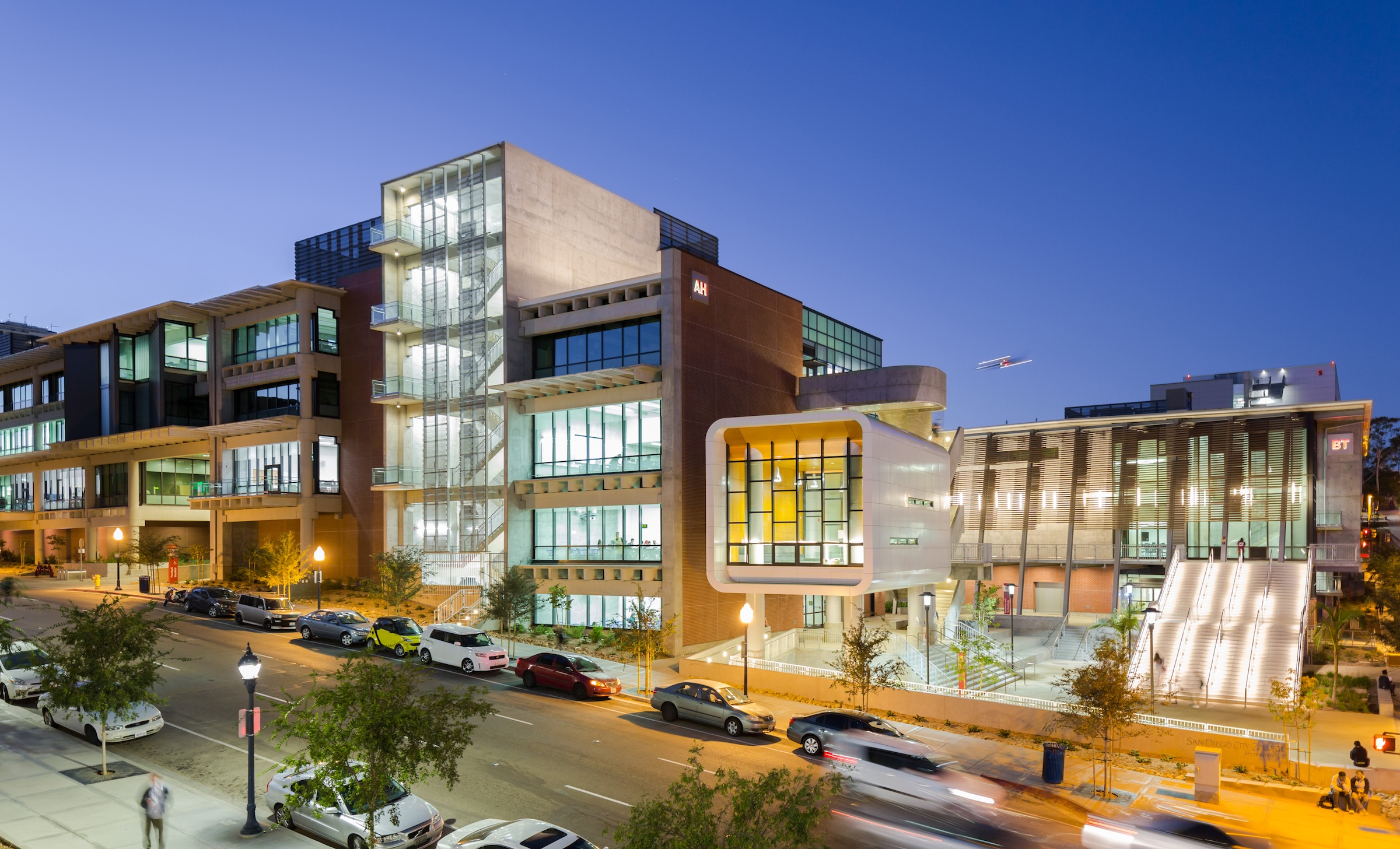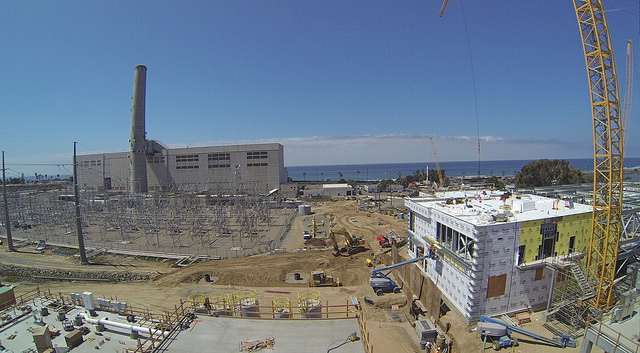Daily Business Report-Nov. 7, 2016
Instructional buildings at San Diego City College.
Final Bonds Sale Saves Community
College District Taxpayers $80 Million
A decade-long program that has transformed San Diego Community College District campuses reached a milestone Nov. 3 when the district made the final sale in its $1.55 billion Proposition S and N bond program – resulting in a savings of $80 million to taxpayers.
In total, $122 million in Proposition N bonds were sold Nov. 3. Higher bond ratings and an improved financial forecast allowed the district to issue $524 million in refunded – similar to refinanced – Proposition S and N General Obligation bonds, resulting in a reduction of debt to taxpayers in the amount of $80 million. Those bonds, too, were sold Nov. 3.
“The district is particularly proud of the fact that almost $80 million in gross debt service savings was realized for the district’s taxpayers whose generosity and support were necessary in the success of the district’s bond measures,” said Maria Nieto Senour, President of the college district board of trustees.
Proposition S, which authorized the sale of bonds in the amount of $685 million, was approved by voters in November of 2002. Proposition N, which authorized the sale of bonds in the amount of $870 million, was approved by voters in November of 2006. Revenue from the two bond measures is being spent on projects benefiting City, Mesa, and Miramar colleges, and the six campuses of Continuing Education. These projects include nearly 30 major renovations or expansions, 30 new, from-the-ground facilities, and dozens of infrastructure, public safety, and accessibility upgrades across the district.
“We have new facilities at all of our campuses and we have been able to make significant upgrades throughout the district, and all of this has been done in a fiscally responsible manner, which speaks volumes about the leadership in our district,” said Bonnie Ann Dowd, the executive vice chancellor.
With the bond sales complete, the district can now wrap up the final Proposition N projects, including a new Center for Business Innovation and a new Fine Arts & Dramatic Arts building at Mesa College, and extensive modernizations of a child development center and three buildings at City College.
_____________________________
Community Colleges Want
More Four-Year Programs
By Sara Libby | Voice of San Diego
California community colleges currently offer a handful of programs that allow students to walk away with full-fledged four-year bachelor’s degrees, thanks to a bill passed in 2014 by San Diego state Sen. Marty Block.
The catch is that the four-year degrees are only offered in hyper-specific career fields, like airframe manufacturing technology and mortuary science, that aren’t currently offered at any UC or CSU schools. That was the compromise with the state’s college systems that Block had to settle for in order to get the bill through – the UC and CSU systems did not want to compete with community colleges for students seeking bachelor’s degrees.
It’s still in a pilot phase – 10 programs launched this fall, including at Mesa College in San Diego, and 15 total are planned, including another at MiraCosta College in Oceanside. This week, Block held a hearing at San Diego City College on the progress of the program and to examine the possibility of expanding it.
The same tension that played out in the original debate around the bill – balancing the need to meet the state’s workforce demands and to offer more affordable degrees with the need to not hurt California colleges’ feelings – was present in the hearing.
The 15 programs were chosen so as not to overlap with anything being offered by four-year public colleges in California, said Pamela Walker, vice chancellor of California Community Colleges.
But Sen. Ben Allen wondered why the duplication issue loomed so large.
“What’s wrong with being duplicative when being duplicative meets a widespread need?” he asked.
Constance Carroll, chancellor of the San Diego Community College District, said she’s already eager to see the program expanded.
“We’re in a context in which 80 community colleges in America currently offer over 500 bachelor’s degrees, with great success and with great coordination with the public universities in their states, and with great student outcomes and workforce placement,” Carroll said. “And in California, we’re talking about 15 degrees – a very tiny pilot, which needs to expand.”
California is currently on track to have a 1.1 million gap between the number of bachelor’s degrees produced in the state and the number the workforce demands, according to the Public Policy Institute of California. Expanding the number of bachelor’s degrees offered by California community colleges, many of the panelists suggested, could go a long way toward meeting that shortfall.
“Our greatest hope would be that the Legislature would consider simply allowing a change in mission, to allow community colleges to offer several bachelor’s degrees on an as-needed basis,” said Carroll.
_____________________________
New Study: Ebola Can Adapt
To Better Target Human Cells
A new study co-led by scientists at The Scripps Research Institute (TSRI) suggests that Ebola virus gained a genetic mutation during the 2013–16 epidemic that appears to have helped it better target human cells.
“There was this belief that Ebola virus essentially never changes,” said TSRI infectious disease researcher Kristian G. Andersen, who also serves as director of infectious disease genomics at the Scripps Translational Science Institute. “But this study tells us that a natural mutation in Ebola virus—which occurred during an outbreak — changed infectivity of human cells.”
The research, published today in the journal Cell, was co-led by Andersen, Jeremy Luban of the University of Massachusetts Medical School and Pardis Sabeti of the Broad Institute of the Massachusetts Institute of Technology and Harvard University. The new study accompanies a second paper in Cell led by an independent group of scientists at The University of Nottingham.
_____________________________
Neuroscience 2016 to Highlight
Discoveries in Brain Reasearch
More than 30,000 neuroscience researchers, clinicians and advocates from around the globe will convene in San Diego Nov. 12-16 for Neoroscience 2016 to explore and uncover the wonders of the brain. The annual meeting of the Society for Neuroscience is the world’s largest source of emerging news about brain science and health.
With approximately 15,000 scientific presentations, 600 exhibitors, and numerous workshops and networking events, Neuroscience 2016 is an opportunity to share information and discuss the latest brain research findings. The meeting also has a huge economic impact on the San Diego area — a report from the San Diego Convention Center Corp. estimated the meeting would generate around $109.6 million in local business revenue.
“Neuroscience 2016 provides unparalleled opportunities for scientists to share their latest discoveries with both their colleagues and the public,” said Society for Neuroscience President Hollis Cline of the Scripps Research Institute in La Jolla. “The neuroscience community is making extraordinary progress to understand the brain — the most complex biological structure in the known universe — and research presented will highlight many new findings. The progress on display in San Diego also reinforces the importance of robust, sustained funding biomedical research to advance our understanding of the brain and nervous system and develop effective treatments for the billion people worldwide who suffer from neurological and psychiatric disorders.”
Click here for more information.
_____________________________
Confie Moves Tijuana Operation
Into New LEED-Certified Building
Confie, a national provider of personal lines and small commercial insurance, announced today that its Tijuana operation has moved into a brand new, LEED-Certified building. With the move, Confie seeks to enrich the workplace with state-of-the-art facilities, as well as grow its nearshore contact center business.
Between its Mexico and U.S. operations, Confie currently has over 4,000 employees — 900 of whom are based in Tijuana. The building can accommodate over 1,400 employees, which leaves room for the company’s anticipated growth.
The new office is located in Zona Rio, Tijuana’s commercial and financial district, which is one mile from the U.S.-Mexico border and nine miles from downtown San Diego. The building is one of the first in Tijuana to achieve LEED Certification.
The building features larger cubicles, electronic whiteboards, a recycling program, a rooftop café with a variety of healthy food options, and spacious common areas in which employees can eat, play games, and relax.
_____________________________

Jaume Plensa Selects Downtown San Diego’s
Pacific Gate for Next Public Installation
Bosa Development announced that Jaume Plensa, best known for monumental sculptures in public spaces across international destinations, is creating a public installation titled “Pacific Soul” that will be on display in the public plaza at its Pacific Gate by Bosa luxury residences.
Scheduled to be installed in late 2017, the sculpture will be a hallmark Plensa, who has produced a multifaceted body of work creating sculptures that speak to the capacity and beauty of humanity, often bringing people together through the activation of public spaces.
By combining conventional sculptural materials like glass, steel, bronze and aluminum with more unconventional media like water, light and sound, Plensa creates hybrid works of intricate energy, psychological weight, and symbolic richness. By posing numerous dualities, such as inside and outside, light and dark, and earth and sky, the artist seeks to connect his work with viewers on an intuitive level.
“Pacific Soul” and Pacific Gate will be located at the corner of Pacific Highway and Broadway.
Nat Bosa, president of Bosa Development, says, “We are passionate about elevating Downtown San Diego onto the international stage. Plensa’s Pacific Soul will be the third public installation we have commissioned Downtown. We are confident that Plensa’s international presence in the fine arts, and the millions of people his sculptures have touched, will bring attention and visitors from around the world.”
_____________________________
San Diego International Airport
Listed as Third Best in the U.S.
San Diego International Airport has been listed as the third best U.S. airport, according to a study by ThePointsGuy.com, a source for travel news. New York’s LaGuardia Airport was listed as the worst.
The study examined the 30 busiest U.S. airports and used data from the Federal Aviation Administration, the Bureau of Transportation Statistics, J.D. Power, Google Maps, iFly.com and the airports’ official websites. Categories included flight delays, cancellations, average security wait times, distance from the city center, public transit options, bars/restaurants, lounges, WiFi costs and parking rates.
The study placed top importance on how well each airport serves its primary purpose — getting you where you’re going on time. Next, how easy it is to reach the airport by car or public transportation? The third category is amenities like restaurants and lounges, as well as fees for parking and WiFi.
Best U.S. Airports
- Phoenix Sky Harbor International Airport
- Portland (Oregon) International Airport
- San Diego International Airport
- Salt Lake City International Airport
- Honolulu International Airport
Worst U.S. Airports
Detroit Metropolitan Airport
Chicago O’Hare International Airport
Newark Liberty International Airport
John F. Kennedy International Airport
LaGuardia Airport
_____________________________
The Marine Room Manager Named
President of Local Restaurant Association

Matt Caponi, manager of The Marine Room, has been named president of the San Diego chapter of the California Restaurant Association.
Since 1906, the California Restaurant Association has been helping restaurants create a better climate for their businesses through advocacy, education and support for its members.
Caponi has been an active member of the association since 2010. With nearly 20 years of experience in the hospitality industry, he joined The Marine Room after he moved from Boston where he worked in several restaurants throughout college. He relocated to San Diego as supervisor at the Hilton Harbor Island’s Sierra Pacific restaurant.
Also home to Executive Chef Bernard Guillas and Chef de Cuisine Ron Oliver, Caponi collaborates with the team to create special events where diners can interact and learn from these award-winning chefs.
_____________________________
Millions Spent on Art at Lindberth Field
Channel 8 Report
Government officials are spending millions of dollars on art projects at San Diego International Airport. But who’s paying for it?
Take a look around Lindbergh Field and you’ll see dozens of high-end art exhibits.
The most expensive one, The Journey, cost more than $2 million.
Another exhibit with a series of 13 bronze windows hanging on pedestrian overpasses cost, on average, $45,000 each per window.
Some travelers like the artwork.
“Money well spent because we enjoy seeing them. I appreciate art,” said one passerby at the airport.
If you fly in or out of Lindbergh Field, you helped pay for the airport art; everything from the $650,000 MetroGnomes project at the new Car Rental Center, to the $500,000 giant kelp renderings on the underside of the airport’s bridges.
The Reflection Room in Terminal 2 looks more like a new-age chapel, total cost $216,000.
Tail Light Swarm consists of 801 left-side, Hyundai Elantra taillights plastered to the wall at the Car Rental Center. Side Mirror Hive has 2200 chrome side-view mirrors on the wall in the shape of a honeycomb. Both projects combined cost $675,000.
There are 46 artworks within the airport’s art collection.
“You know what? It’s a waste.I don’t care how nice it looks, i’’s a waste,” said one rental car customer.
The government agency that approved all this spending on art projects is the San Diego Airport Authority. Decisions on the projects themselves are made by an appointed board.
“We are an independent agency that was created to operate the airport,” said spokesperson Rebecca Bloomfield.
“Art has been added to the airport as a way to improve ambiance, the environment and really just improve that passenger experience,” Bloomfield said.
The Airport Authority will tell you that none of the art exhibits at Lindbergh Field were paid for with taxpayer money. Instead, the agency says, travelers foot the bill every time they pay for parking, concessions, airline tickets and rental cars.
Businessman Dan Shea disagrees.
“Well, what is it if it’s not taxpayer money? It’s not private money,” he said.
“So they can try to say it’s anything other than taxpayer money but that’s where it all starts is with the taxpayer,” said the San Diego entrepreneur.
“You know what? It’s a waste.I don’t care how nice it looks, it’s a waste,” said one rental car customer.
The government agency that approved all this spending on art projects is the San Diego Airport Authority. Decisions on the projects themselves are made by an appointed board.
“We are an independent agency that was created to operate the airport,” said spokesperson Rebecca Bloomfield.
“Art has been added to the airport as a way to improve ambiance, the environment and really just improve that passenger experience,” Bloomfield said.
The Airport Authority will tell you that none of the art exhibits at Lindbergh Field were paid for with taxpayer money. Instead, the agency says, travelers foot the bill every time they pay for parking, concessions, airline tickets and rental cars.
Businessman Dan Shea disagrees.
“Well, what is it if it’s not taxpayer money? It’s not private money,” he said.
“So they can try to say it’s anything other than taxpayer money but that’s where it all starts is with the taxpayer,”said the San Diego entrepreneur.



